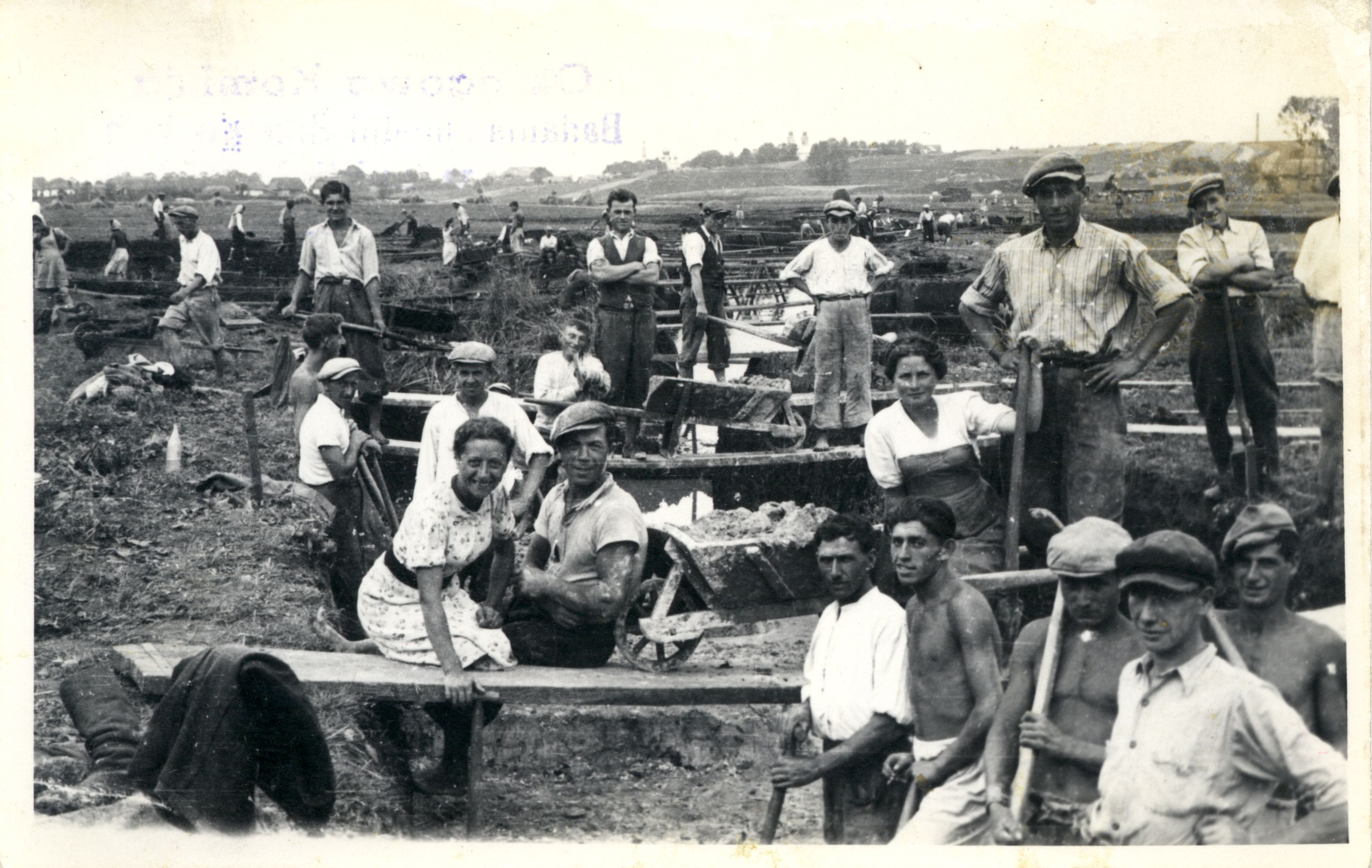Depicting non-industrial forced labour: The example of water works camps in the Lublin district
The photograph depicts a rarely discussed topic in Holocaust historiography: The daily life of Jewish forced labourers in early water works camps (Wasserwirtschaftslager) in the Lublin District. The series of photographs from the archives of the Institute of National Remembrance at Warsaw visualises the genocidal nature of drainage labour in a remote area of Eastern Poland starting in Summer 1940. The photograph is preserved as part of a collection of judicial investigations against perpetrators in approximately 60 camps of the German Water Works Management (Wasserwirtschaftsverwaltung) all over the Lublin District. This blog post is part of ongoing research on the significance of rural forced labour in German-occupied Poland during the early period of the Holocaust (1940-1942).1

Pictures from water works camps
Previous research has uncovered a considerable number of photographs from several forced labour camps throughout the Lublin District. Usually the photographer is unknown, as is the fate of Jewish labourers depicted. This photograph is exceptional in that we know something about the author. Władyslaw Mączka, born 1906, was a Polish farmer and resident of Tyszowce, in the southern part of the Lublin District, south of the road connecting Zamość and Hrubieszów, and near to today’s Polish-Ukrainian border. According to his testimony – given to the Polish Public Prosecutor in Lublin in March 1968 – he was the owner of a secret photo studio and was living next to Zwangsarbeitslager (ZAL) Tyszowce. Mączka reported having been asked by Jewish labourers of the camp to take pictures of them digging to regulate the river Huczwa.
“Walking along the Huczwa river bank I took pictures of those willing. I know neither the names of these Jews nor where they were from. I remember two of the Jews telling me that they are from Lublin.”
Jews in water works camps of Tyszowce
In summer 1940, German authorities ordered the Jewish Council in Lublin to finance a forced labour camp in Tyszowce. The camp was located at a large burned-out mill opposite a school, with 500-600 inmates. The first workers were dislocated from the forced labour camp at Bełżec, and later from Warsaw, Lublin, Otwock, Kalisz and numerous other Polish cities. Starting in late 1941, they also came from occupied Czechoslovakia.
As can be ascertained from the picture, Jewish workers had to labour without appropriate footwear in Tyszowce and in other work camps, spending an eight-to-ten hour day in the inlets of the Bug River. Two other important aspects in this image is that the workers were usually young, and, more importantly, were frequently female.
The camp existed from August 1940 until spring 1942 when remaining inmates were deported to the extermination camp at Bełżec.
The annotation of the document was made possible by Neatline (an Omeka plugin), some of the historical borders used here were adapted from the Spatial History Project.
Mapping forced labour migration: Dislocated Jewish workers from Warsaw in the Chełm water works camps
The interactive map below describes the same process for the whole Lublin District, for example in the Chełm region. Starting in summer 1940, the Jewish Council in Warsaw was commissioned by the German Labour Office in Warsaw to deploy workers for the water works camps in the eastern-most district of the General Government. Consequently in 1940 and 1941, several thousand Jewish workers were deported from the Warsaw to the Sobibór train stations where they usually had to march to up to 16 melioration camps around Chełm. The map is a visualisation of segments of a memorandum to the German authorities of the Warsaw District. In this note from early 1941, the Jewish Council complained about the poor living conditions in the camps. Above all, this note describes meticulously the number of deported workers sent to and from Warsaw to the Lublin District on the eastern peripheries of the General Government. This and similar documents also give insight into life in the forced labour water works camps, which was increasingly characterised by death and disease, malnutrition and corruption faced by young people. Importantly, they describe such conditions in late 1940 already, i.e. before the process of “ghettoisation” actually started. Attached to the memorandum is a letter from 180 Polish-Jewish workers at ZAL Tyszowce to their relatives in Warsaw in November 1940:
“Dear Parents!!! […] We are totally exhausted. We have been working in the water constantly […] Now it is freezing, but we are still working in waist-high water. We are affected by the cold and malnutrition […]. Half of us suffer from infectious diseases. We are not treated as workers, but as slaves.”
Accordingly, the memorandum of the Warsaw Jewish Council comes to the conclusion that the forced labour camps of the German Water Works Management were synonymous with penal camps. Due to the camps’ vicinity to the later extermination camps, most of the workers who survived labour at the water works at the beginning of 1942 were later murdered either in Bełżec or in Sobibór. Primary sources on the fate of the Jewish forced labourers from Warsaw in non-industrial forced labour camps (like Tyszowce) have recently been made accessible as volume 24 of the Ringelblum Archives, with original documents attached as scans on a CD-ROM.
Notes
- Frank Grelka: Rural hubs of early destruction: The Waterworks’ Camps in the Lublin District, 1940-1942, (accepted for publication in) Yad Vashem Studies, 2 (2017) ↩
One Comment Leave a reply